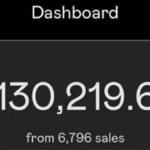The digital age has brought numerous career opportunities in data-related fields, leading to confusion about various roles and their requirements. One question that frequently arises among aspiring professionals is: is data entry considered data science? The short answer is no, but the relationship between these fields is more nuanced than you might think.
Understanding the distinction between data entry and data science is crucial for anyone considering a career in data-related fields. While both involve working with data, they serve different purposes, require different skill sets, and offer vastly different career trajectories.
What is Data Entry?
Data entry is a fundamental administrative task that involves inputting, updating, and maintaining information in computer systems or databases. This process typically includes transcribing data from physical documents, forms, or other digital sources into structured formats.
Key Characteristics of Data Entry Work
Data entry professionals primarily focus on:
Accuracy and Speed: The primary goal is to transfer information correctly and efficiently from one format to another. Workers are often measured by their typing speed and error rates.
Routine Tasks: Most data entry work involves repetitive processes that follow established procedures and formats.
Basic Software Skills: Proficiency in spreadsheet applications like Microsoft Excel, Google Sheets, and basic database management systems is typically sufficient.
Quality Control: Ensuring data integrity through verification and validation processes, though these are usually straightforward checks rather than complex analysis.
Common Data Entry Responsibilities
- Transcribing handwritten or printed documents into digital formats
- Updating customer information in CRM systems
- Processing invoices, receipts, and financial records
- Maintaining inventory databases
- Entering survey responses or form submissions
- Performing basic data cleaning tasks like removing duplicates
What is Data Science?
Data science is a multidisciplinary field that combines statistical analysis, programming, and domain expertise to extract meaningful insights from complex datasets. Data scientists use advanced analytical techniques to solve business problems and make data-driven predictions.
Core Components of Data Science
Statistical Analysis: Understanding probability, hypothesis testing, regression analysis, and other statistical methods to interpret data patterns.
Programming Skills: Proficiency in languages like Python, R, SQL, and sometimes Java or Scala for data manipulation and analysis.
Machine Learning: Building predictive models and algorithms that can learn from data and make autonomous decisions.
Data Visualization: Creating compelling charts, graphs, and dashboards to communicate findings to stakeholders.
Business Acumen: Understanding industry-specific challenges and translating analytical insights into actionable business strategies.
Typical Data Science Projects
- Developing recommendation systems for e-commerce platforms
- Creating predictive models for customer churn
- Analyzing market trends and consumer behavior
- Building fraud detection algorithms
- Optimizing supply chain operations through data analysis
- Conducting A/B tests to improve product features
Key Differences Between Data Entry and Data Science
Skill Requirements
Data Entry Skills:
- Fast and accurate typing (typically 40+ WPM)
- Attention to detail
- Basic computer literacy
- Familiarity with office software
- Time management abilities
Data Science Skills:
- Advanced mathematics and statistics
- Programming proficiency
- Critical thinking and problem-solving
- Machine learning knowledge
- Data visualization expertise
- Communication skills for presenting findings
Educational Background
Data entry positions often require only a high school diploma or equivalent, with on-the-job training provided for specific systems and procedures. In contrast, data science roles typically demand:
- Bachelor’s degree in mathematics, statistics, computer science, or related field
- Many positions prefer master’s degrees or specialized certifications
- Continuous learning to keep up with evolving technologies and methodologies
Salary Expectations
The compensation gap between these fields reflects their different requirements and value propositions:
Data Entry Salaries:
- Entry-level: $25,000 – $35,000 annually
- Experienced: $30,000 – $45,000 annually
- Specialized roles: Up to $50,000 annually
Data Science Salaries:
- Entry-level: $70,000 – $95,000 annually
- Mid-level: $100,000 – $130,000 annually
- Senior positions: $140,000 – $200,000+ annually
Career Advancement Opportunities
Data entry careers typically follow a linear progression within administrative or clerical roles, with limited advancement opportunities. Data science careers offer multiple growth paths including senior analyst positions, team leadership roles, and specialized areas like machine learning engineering or data architecture.
Can Data Entry Experience Help in Data Science?
While data entry is not considered data science, it can provide valuable foundational experience for aspiring data scientists. Here’s how:
Transferable Skills from Data Entry
Data Quality Awareness: Data entry work develops a keen eye for data inconsistencies, duplicates, and formatting issues – skills that are crucial in data preprocessing for data science projects.
Database Familiarity: Working with various database systems gives data entry professionals practical experience with data storage and retrieval concepts.
Attention to Detail: The precision required in data entry translates well to data validation and quality assurance tasks in data science workflows.
Understanding Data Structures: Regular exposure to different data formats helps build intuition about how information should be organized and structured.
Bridging the Gap: From Data Entry to Data Science
Making the transition requires strategic skill development:
Learn Programming Languages: Start with Python or R, focusing on data manipulation libraries like pandas or dplyr.
Study Statistics and Mathematics: Build foundational knowledge in descriptive statistics, probability, and linear algebra.
Practice Data Analysis: Work on personal projects using publicly available datasets to demonstrate analytical capabilities.
Pursue Relevant Education: Consider bootcamps, online courses, or formal degree programs in data science or related fields [link to data science education guide].
Build a Portfolio: Create projects that showcase your ability to clean, analyze, and visualize data effectively.
Common Misconceptions About Data Entry and Data Science
Misconception 1: “Data Entry is the First Step in Data Science”
While data collection and preprocessing are important parts of the data science pipeline, modern data science work rarely involves manual data entry. Most data scientists work with automated data collection systems, APIs, and existing databases.
Misconception 2: “Data Science is Just Advanced Data Entry”
This oversimplification ignores the analytical, predictive, and strategic aspects of data science. Data scientists don’t just input data – they interpret it, model it, and use it to make recommendations that drive business decisions.
Misconception 3: “Anyone Can Transition from Data Entry to Data Science Easily”
While the transition is possible, it requires significant additional learning and skill development. Success depends on dedication to acquiring new technical skills and analytical thinking capabilities.
Skills Development Path for Career Transition
Phase 1: Foundation Building (3-6 months)
Technical Skills:
- Basic SQL for database querying
- Excel advanced features and functions
- Introduction to Python or R programming
Analytical Skills:
- Descriptive statistics concepts
- Data visualization principles
- Basic data cleaning techniques
Phase 2: Intermediate Development (6-12 months)
Technical Skills:
- Advanced Python/R programming
- Statistical analysis methods
- Introduction to machine learning algorithms
Project Experience:
- Complete 2-3 guided data analysis projects
- Participate in online competitions or challenges
- Build a GitHub portfolio with documented work
Phase 3: Advanced Preparation (12-18 months)
Specialized Skills:
- Deep learning fundamentals
- Advanced machine learning techniques
- Big data tools and cloud platforms
Professional Development:
- Network with data science professionals
- Attend industry conferences and meetups
- Consider formal education or certification programs
Industry Perspectives and Job Market Trends
The demand for both data entry and data science professionals continues to evolve with technological advancement. Understanding these trends helps inform career decisions.
Automation Impact on Data Entry
Many traditional data entry tasks are being automated through:
- Optical Character Recognition (OCR) technology
- Robotic Process Automation (RPA)
- Machine learning-powered data extraction tools
This shift creates opportunities for data entry professionals to move into more analytical roles that complement automated systems.
Growing Demand for Data Scientists
Organizations across industries are investing heavily in data science capabilities, creating opportunities for:
- Business intelligence analysts
- Data engineers
- Machine learning specialists
- Data product managers
[Link to current data science job market analysis]
Making an Informed Career Decision
Consider Data Entry If You:
- Prefer structured, routine work with clear objectives
- Want to enter the workforce quickly with minimal additional training
- Enjoy detail-oriented tasks and have strong organizational skills
- Are looking for flexible work arrangements, including remote opportunities
Pursue Data Science If You:
- Enjoy solving complex problems and working with ambiguous challenges
- Have strong analytical and mathematical aptitude
- Are willing to invest time in continuous learning and skill development
- Want to work at the intersection of technology and business strategy
Resources for Further Learning
For Data Entry Professionals
- Online typing courses to improve speed and accuracy
- Database management certifications
- Advanced Excel training programs
- Process improvement methodologies
For Aspiring Data Scientists
- Online platforms like Coursera, edX, and Udacity offer comprehensive data science programs
- Kaggle competitions provide practical experience with real datasets
- GitHub repositories with open-source data science projects
- Professional communities and forums for networking and learning
[Link to comprehensive data science learning resources]
Conclusion
Is data entry considered data science? Definitively not, but understanding both fields helps clarify career paths and opportunities in the data-driven economy. Data entry serves as a foundation for data management processes, while data science leverages advanced analytical techniques to extract strategic insights from information.
For professionals currently in data entry roles, the experience provides valuable context for understanding data quality and management challenges. However, transitioning to data science requires significant additional education and skill development in programming, statistics, and analytical thinking.
The key to success in either field lies in understanding their distinct requirements, responsibilities, and growth opportunities. Whether you choose to excel in data entry or pursue the more technical path of data science, both careers offer valuable contributions to organizations’ data capabilities.
Making an informed decision about your career path starts with honest self-assessment of your interests, aptitudes, and willingness to invest in ongoing skill development. The data field offers numerous opportunities for those prepared to meet its evolving demands.
Frequently Asked Questions (FAQs)
Q1: Can I become a data scientist without a college degree?
A: While most data science positions prefer formal education, it’s possible to enter the field through intensive bootcamps, self-study, and building a strong portfolio of projects. However, you’ll need to demonstrate equivalent knowledge and skills through your work and certifications.
Q2: How long does it take to transition from data entry to data science?
A: The transition typically takes 12-24 months of dedicated study and practice, depending on your current skill level and the time you can commit to learning programming, statistics, and analytical techniques.
Q3: What programming language should I learn first for data science?
A: Python is generally recommended for beginners due to its readability and extensive libraries for data analysis (pandas, numpy, scikit-learn). R is also excellent, particularly for statistical analysis and visualization.
Q4: Is data entry work being replaced by automation?
A: Many routine data entry tasks are being automated, but opportunities remain in data validation, quality assurance, and working with complex or unstructured data that requires human judgment.
Q5: What’s the most important skill for data scientists?
A: While technical skills are crucial, the ability to communicate findings clearly and translate analytical insights into business recommendations is often considered the most valuable skill for data scientists.
Q6: Can I work remotely in data entry and data science?
A: Both fields offer remote work opportunities, though data science roles may provide more flexibility and higher compensation for remote positions due to the specialized skill requirements.
Q7: Should I get a master’s degree to work in data science?
A: A master’s degree can be beneficial but isn’t always necessary. Many successful data scientists have bachelor’s degrees supplemented with specialized training, certifications, and strong portfolios demonstrating their capabilities.









